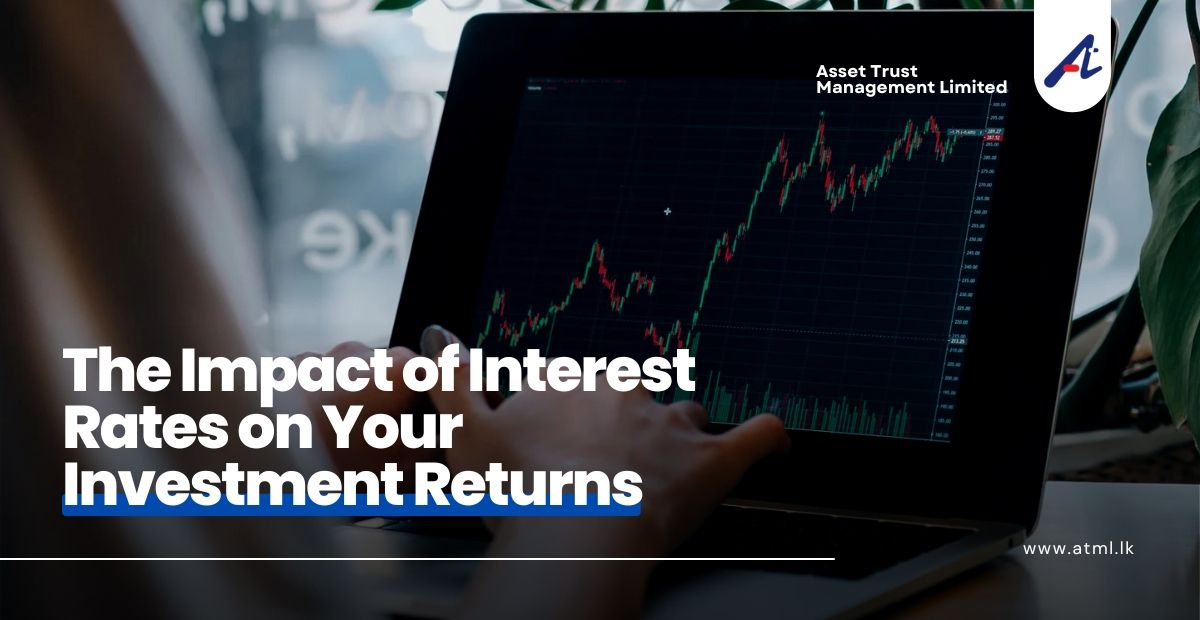The Impact of Interest Rates on Your Investment Returns

The Impact of Interest Rates on Your Investment Returns
Posted on 2025-01-29 17:05:57
The impact of interest rates on your investment returns is profound, as they influence various asset classes differently. Interest rates are set by central banks (like the Federal Reserve in the U.S.) and can have both direct and indirect effects on investments. Here's how interest rates typically affect investment returns:
1. Bonds and Fixed-Income Investments
- Inverse Relationship with Interest Rates: Bond prices and interest rates have an inverse relationship. When interest rates rise, bond prices typically fall, and when interest rates fall, bond prices tend to rise. This happens because existing bonds with lower rates become less attractive when new bonds are issued with higher rates.
- Yield Impact: If you're holding bonds, rising interest rates will mean lower market prices for those bonds if you want to sell before maturity. Conversely, when rates drop, bonds can increase in value, providing a capital gain.
- Duration Sensitivity: Bonds with longer durations are more sensitive to interest rate changes. So, if rates rise significantly, longer-term bonds tend to lose more value than short-term bonds.
2. Stocks (Equities)
- Higher Rates Impact on Stock Prices: Rising interest rates can lead to higher borrowing costs for companies, which can reduce corporate profits and make equity investments less attractive. As borrowing becomes more expensive, companies may also scale back on expansion and hiring plans, which can slow growth.
- Valuation Adjustment: Investors often use interest rates in discounted cash flow models to value stocks. When rates increase, the present value of future earnings falls, which can lead to lower stock prices, especially for growth stocks (which are expected to generate earnings far in the future).
- Sector Sensitivity: Certain sectors are more sensitive to interest rate changes. For example, financial stocks might benefit from rising rates because they can charge higher interest on loans. Conversely, sectors like real estate and utilities, which rely heavily on borrowing, may be hurt by rate hikes.
3. Real Estate
- Mortgage Rates and Affordability: As interest rates rise, mortgage rates tend to increase, which can reduce affordability for homebuyers. This can lead to lower demand for real estate, potentially decreasing property values. However, rising interest rates can also have a stabilizing effect on real estate prices in some markets by slowing down the pace of price appreciation.
- Real Estate Investment Trusts (REITs): REITs are also affected by interest rates. Rising rates can lead to higher capital costs for real estate development and negatively impact REIT prices. On the other hand, falling rates may provide a boost to REITs due to lower borrowing costs and higher property valuations.
4. Commodities
- Dollar and Inflation Effect: Interest rate changes affect the strength of a currency, particularly the U.S. dollar. Higher interest rates typically strengthen the currency, which can lead to a decline in commodity prices (like gold or oil) priced in that currency, since stronger currencies make commodities more expensive for foreign buyers.
- Inflation and Precious Metals: In contrast, lower interest rates are often associated with higher inflation, which can drive up demand for commodities like gold, as investors seek a hedge against inflation.
5. Foreign Exchange Markets (Forex)
- Currency Value and Investment Flows: Interest rates are a key driver in the foreign exchange market. Higher interest rates in a country can attract foreign capital, driving up the value of that country's currency. On the flip side, low rates tend to discourage investment inflows, leading to a depreciation of the currency.
6. Alternative Investments
- Venture Capital & Startups: Higher interest rates can make it more difficult for startups to raise capital, as venture capitalists may demand higher returns due to the increased opportunity cost of investing in riskier ventures instead of safer options like bonds or savings accounts.
- Private Equity: Private equity investments can also be impacted by rising interest rates, as higher borrowing costs might reduce the ability to leverage acquisitions effectively or impact the profitability of businesses in the portfolio.
7. Overall Economic Environment
- Inflation: Rising interest rates are often used as a tool to combat inflation. While inflation can erode the purchasing power of returns, it can also lead to higher nominal returns on some assets (e.g., commodities or stocks in sectors like energy) in the short term.
- Market Sentiment: Interest rate hikes can signal confidence in the economy, but they can also make markets nervous, particularly if they indicate that inflation is becoming uncontrollable. This sentiment can lead to increased volatility and market corrections.
The relationship between interest rates and investment returns is complex, as it impacts different asset classes in varied ways. Generally:
- Rising rates can hurt bond prices, growth stocks, and real estate, while benefiting sectors like financials and commodities in some cases.
- Lower rates often stimulate economic growth, boost asset prices, and reduce borrowing costs, but they may reduce yields on fixed-income investments.
It’s essential for investors to consider the broader macroeconomic environment, their own risk tolerance, and investment horizon when making decisions in a rising or falling interest rate environment.
